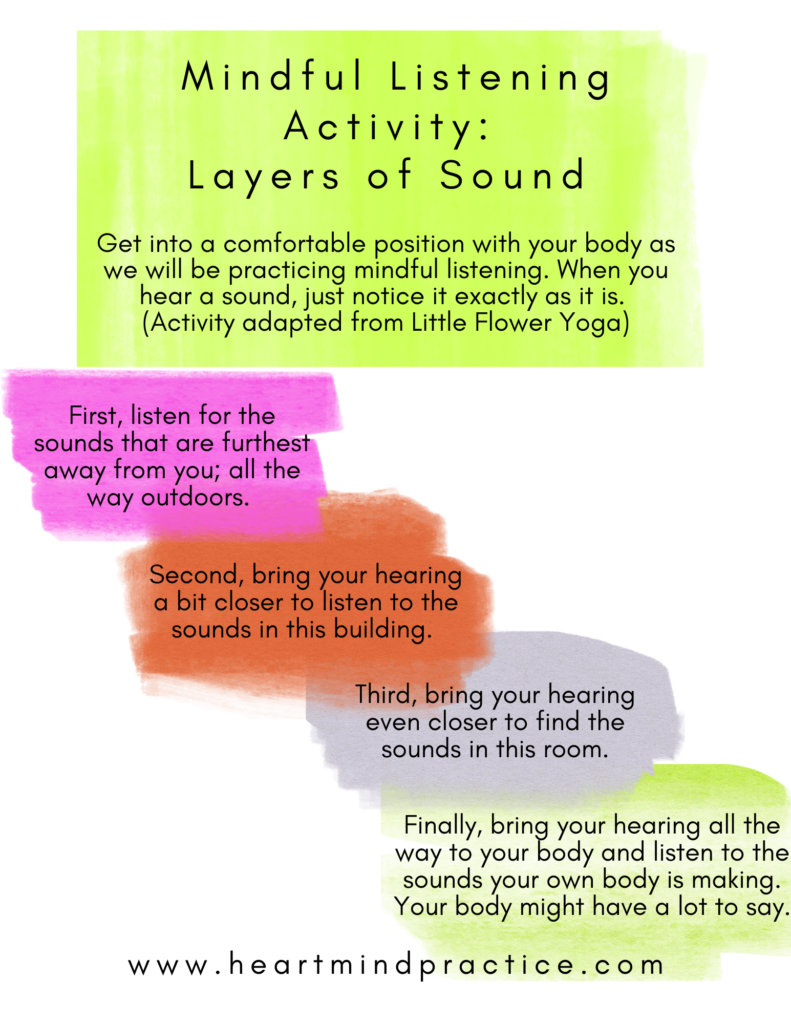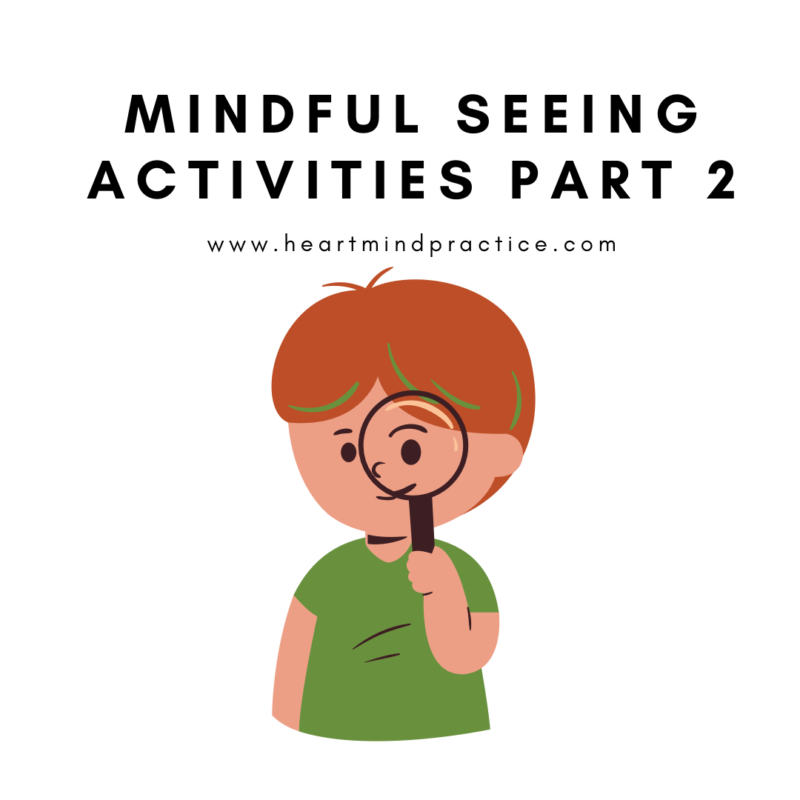Part two of mindful hearing activities is layers of sound. This is a simple practice that has been well received by children and youth. I’ve even gotten feedback that some have used this practice in their lives. Children are naturally curious and also enjoy proving that they can hear more sounds than others.
Adults, including myself, can be more critical and question why we need to do these mindfulness activities like this instead of talking about and processing our pain. It’s important to acknowledge and talk about difficulties…and it’s important to work on being present and live in the now. I find that going back to the basics and doing simple practices help us to get out of our minds where a lot of our suffering is happening. Strosahl and Robinson who teach Acceptance and Commitment Therapy capture this well in their book “Mindfulness and Acceptance Workbook for Depression”:
The ability to focus and sustain your attention on what you want to pay attention to (not what your reactive mind is telling you to pay attention to) allows you to access the space of wise mind.
Strosahl and Robinson, 2017
I find it so interesting to learn about the physiology of our ears and how our brain and ears work together. For example, I learned through all my dad’s audiologist appointments that some of his hair cells are damaged, which accounts for why he cannot hear certain sounds. Day to day we take for granted our ability to hear. For instance, we’re able to tune into a conversation despite all the background noise. Or how we’re able to hear a song and listen to it as a whole or pay attention to the different instruments. Hearing is a sense we cannot turn off, but we can direct our focus of attention to hear different sounds near and far. Layers of sound practice helps to train our flexible awareness. This practice is adapted from Little Flower Yoga and they have so many great resources as well as training in yoga and mindfulness for children.
Mindful listening activity: Layers of sound
Get into a comfortable position with your body as we will be practicing mindful listening. When you hear a sound, just notice it exactly as it is. You can have your eyes closed or look down; whatever is comfortable for you.
- Listen for the sounds that are furthest away from you; all the way outdoors.
- Bring your hearing a bit closer to listen to the sounds in this building.
- Bring your hearing even closer to find the sounds in this room.
- Bring our hearing all the way to your body and listen to the sounds your body is making. Your body might have a lot to say.
- What were your experiences of during the activity? What sounds did you notice? What did you notice in your mind and body? How do you feel now after we finished the activity?

Finally, I leave you with a moment of listening video about Stillwater, the wise and patient panda who lives next door.





